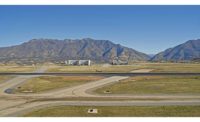ENR 2024 Mountain States Best Projects
Best Project, Energy/Industrial: Denver International Airport Airfield Deicing

Photo courtesy Denver International Airport
Denver International Airport Airfield Deicing
Denver
BEST PROJECT
Submitted by: PCL Construction
Owner: Inland Technologies Ltd. International
Lead Design: Iron Horse Architects
General Contractor: PCL Construction
Civil/Structural Engineer: S.A. Miro Inc.
MEP Engineer: Murphy Co.
Glycol recycling systems are a crucial component of airport infrastructure that manage deicing fluid runoff and minimize environmental impacts. Eighteen new systems are now in place across Denver International through an effort that required engineers to design each system individually based on specific requirements and site conditions to ensure an optimal layout for efficient fluid collection and processing. The glycol recycling systems allow low-concentration glycol to be extracted from stormwater and reused. With the new systems installed, the airport is now able to recycle 99% of glycol used in deicing processes.
To complete the project, crews had to demolish existing systems and install the new ones within existing buildings, all without interrupting airport operations. Twelve or more pieces of recycling equipment, such as separators, filters and distillation units, are located at each of the 18 sites, many of which are installed at basement level. This created numerous challenges since traditional equipment placement methods using cranes would be cost-prohibitive and impact airport operations. To ensure highly accurate installation, the contractor used an articulating boom lift and cantilever beam to place equipment within each building, which allowed the team to avoid scaffolding and resulted in better ongoing functionality for airport operations. The approach also significantly reduced costs.

Photo courtesy Denver International Airport
Large amounts of pipe were necessary across the installations as well. Although the traditional approach would be to use pipe that was cut off site, then assembled and welded on site, the team chose to use a measure, cut and build-to-fit onsite method that ensured every cut precisely matched the engineering plan, reducing the number of errors and better protecting the structural integrity of the existing buildings.
A complex electrical scope required careful coordination to maintain electrical integrity throughout demolition and installation. Because mechanical teams often required large portions of each building to execute their work, the electrical teams had to ensure that the airport had power when and where it was needed throughout the project.



